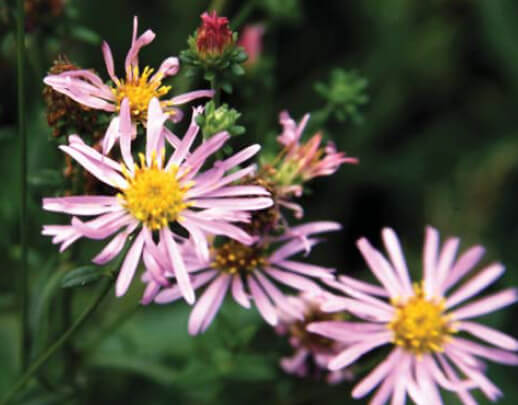This sweet little aster is native to coastal southern California; and given the right conditions will spread happily in most gardens. The pale lilac, daisy-like flowers make a cheerful display in summer. Plant it in full sun to part shade; it is accepting of many soil types. The plant can spread vigorously if given extra water; withholding water will keep it in check.
Aster chilensis can be interplanted with bunchgrasses and native bulbs in a meadow or used to underplant a mixed hedgerow. The flowers are a source of nectar for butterflies and moths, and pollen for a host of beneficial insects. The plant sometimes supports the larvae of the Painted Lady and Field Crescent butterflies. The seeds are minute and provide a food source for insects and ground-feeding birds. In some situations the deer nibble on this plant, so a little protection will help it to establish.
Named Varieties include ‘Pt. St. George,’ which forms a groundcover with flowering stalks no more than 4 to 6” tall, and ‘Purple Haze,’ which is a taller form with deeper violet flowers on stalks to 2 ft.


